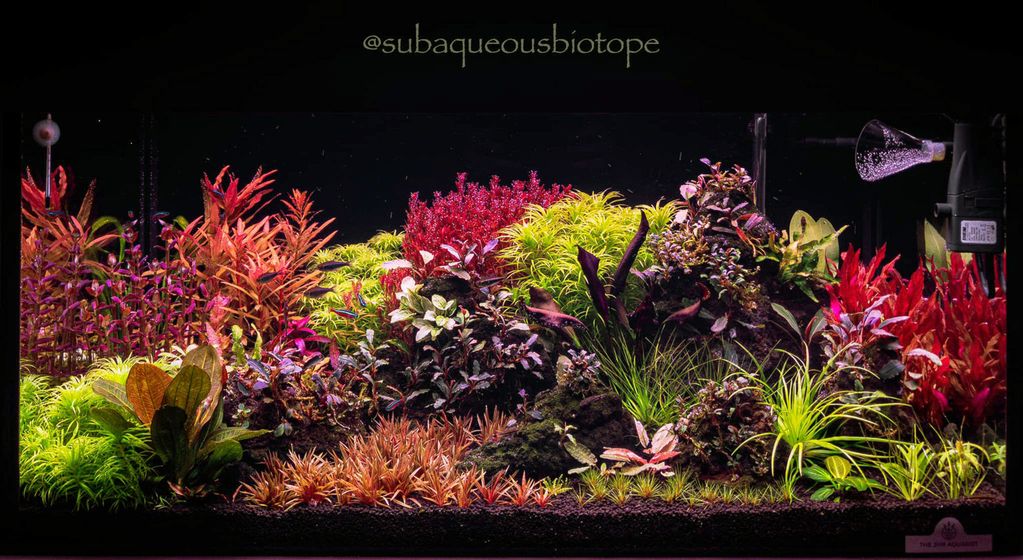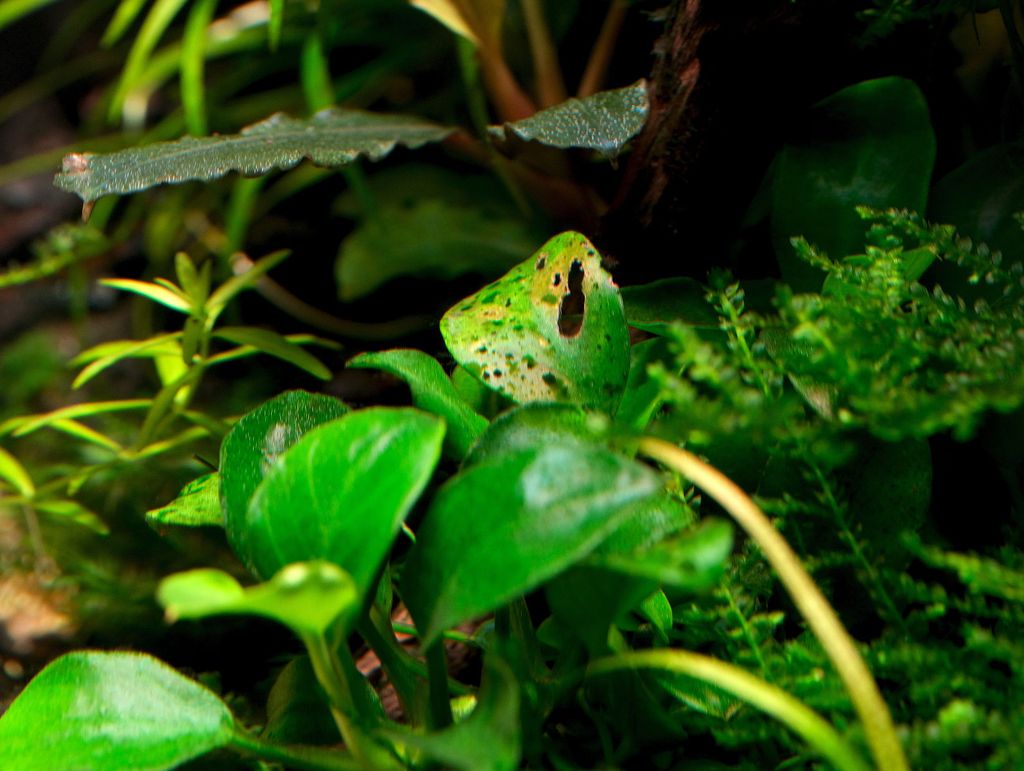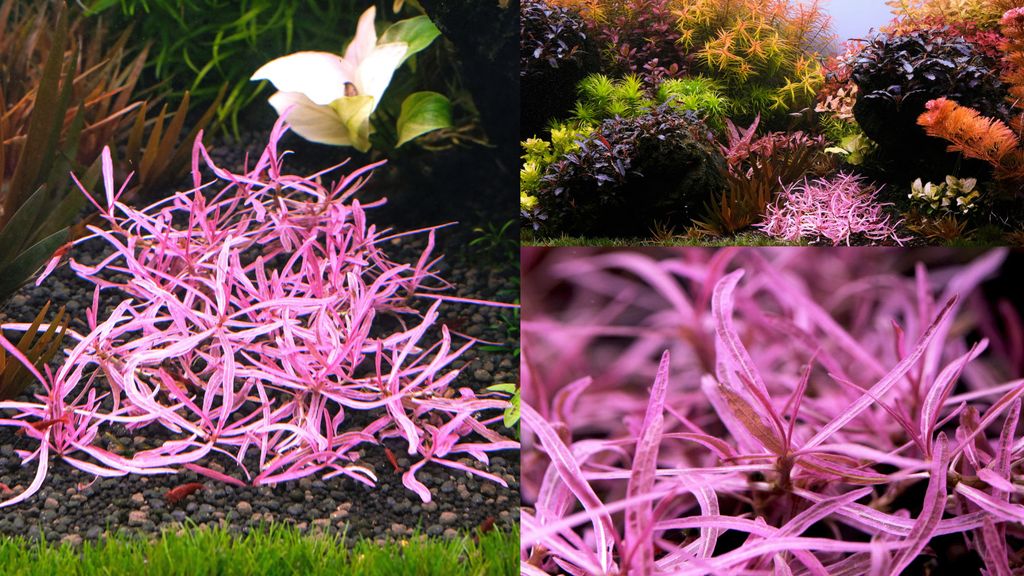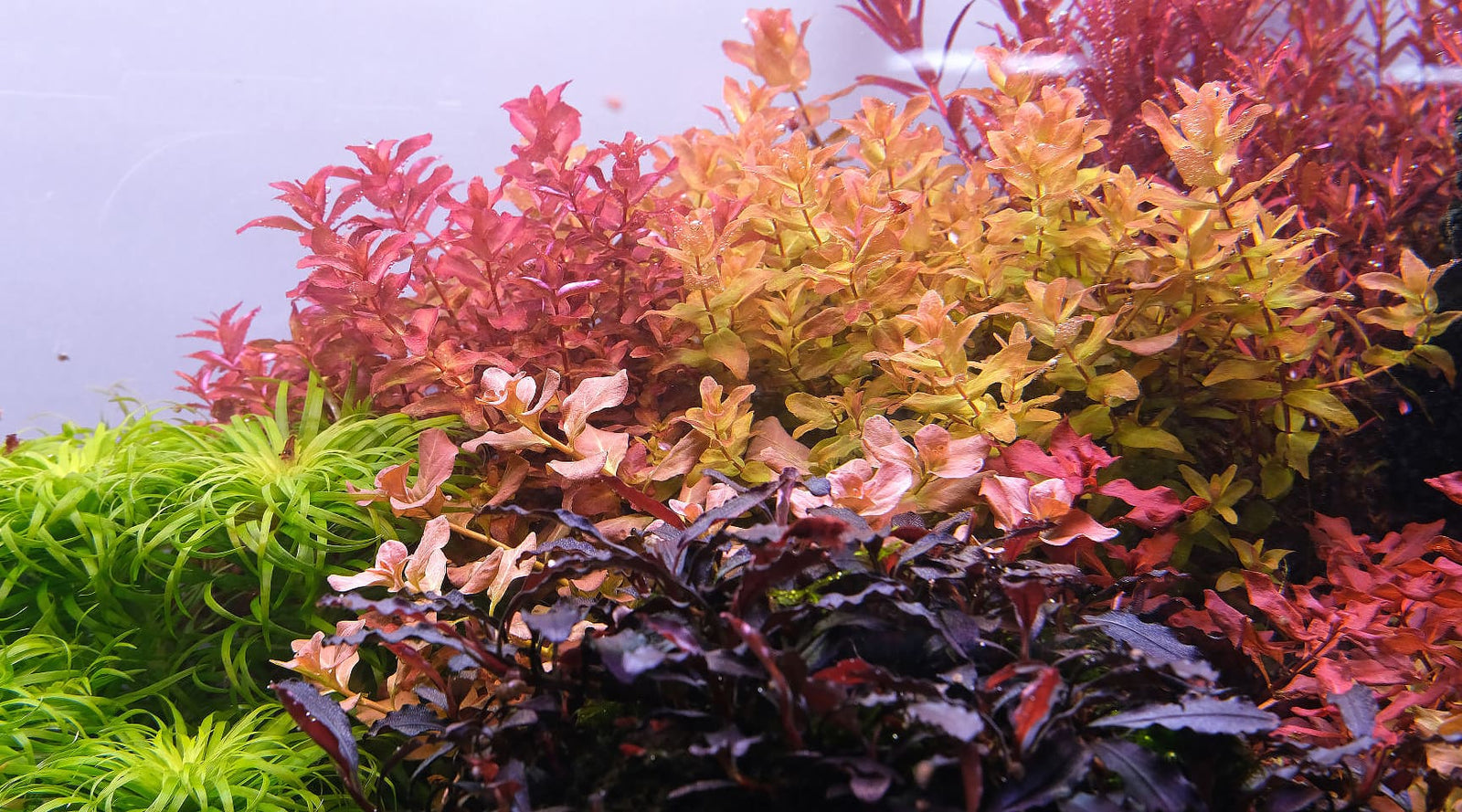
Why do old leaves deteriorate in the first place?
There are many factors that give rise to this, but the primary reason in planted tanks is that a change in the environment that requires the plant to reprogram its enzymes to make best use of what is available in the current environment. For example, if you move a plant from shade to an area of very high light, the plant can channel energy from producing light capturing pigments in its leaves to producing new leaves or protective pigmentation instead. Green plants are deeper green in shade, as they need to produce more chlorophyll to survive, while many red species only grow very red in high light – as they produce protective pigments under high light.
While older leaves have some plasticity that enables adaptation, there are limits to how much old leaves can adapt. New leaves that are grown in the new environment, however, can be fully optimized to make use of current environmental conditions. When there are drastic changes in the environment, the plant may choose to focus its energy on producing new leaves, while abandoning its older leaves that are no longer suited for the new environment.
Plant stress from poor CO2 or nutrient access also forces the plant to channel energy to new growth in an attempt to survive. For example stem plants that are deprived of CO2 often abandon their older leaves prematurely, in order to channel energy to top growth in an attempt to breach the water surface and gain access to air.
Well-fed plants generally adapt to changes in the tank environment better, as they have more stored energy. Macro nutrients such as nitrogen, phosphates and potassium are mobile in the plant. A long term inadequate supply of nutrients can force plants to scavenge these nutrients from older leaves to fund new growth. Therefore plants grown in overly lean conditions can face an accelerated deterioration of older leaves when growing new leaves due to environmental changes.
This is why when buying plants from the store, checking to make sure that the plants are robust and well grown is important. Healthy, robust plants will have an easier time adjusting when transferred to the tank.
Example of adaptation changes due to a change in environment
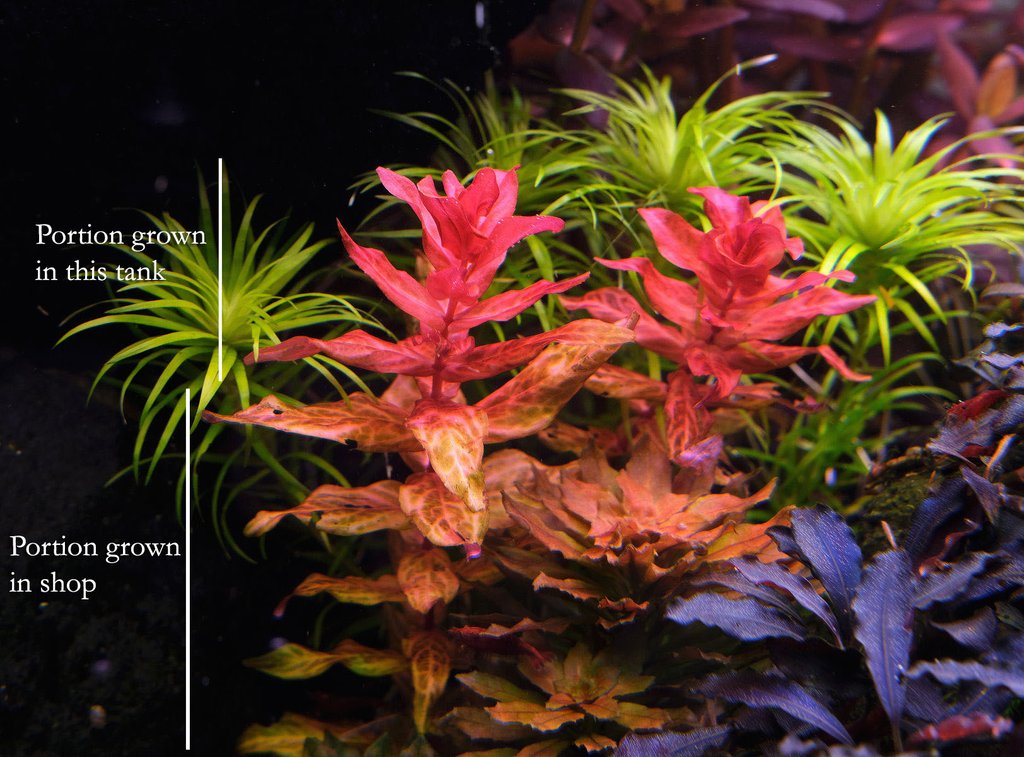
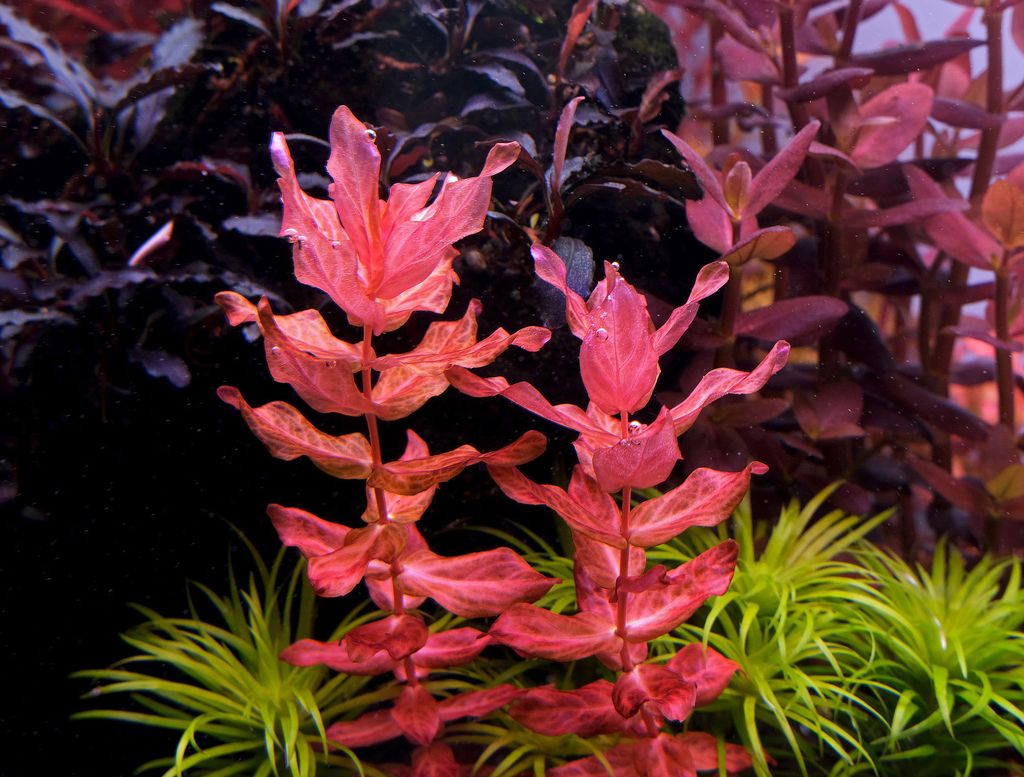
In a tank, if you have 100% of adapted growth (adapted growth meaning that the portion of the plant was grown under current tank conditions), the tank will be much more resistant to algae as a whole. This is why replanting new growth, discarding older growth is one of the key actions that can make a tank more algae resistant as a whole.
In the case where the environment changes drastically, and the old leaves that were programmed for a different environment cannot function well – the plant will channel all energy into new growth, even drawing energy and nutrients from old growth to feed the development of new leaves. This hastens the deterioration of old leaves. This is why plants bought from the shop often lose their old leaves even as they grow robust new ones.
Most plant species categorized as ‘easy plants’ have more plasticity and can adapt existing leaves to a wider range of new conditions. Picky species that are classified as difficult to grow are often difficult because they have difficult adapting to new conditions – many such species, once adapted, are actually quite undemanding plants. The prime example of a plant that is classified as difficult in this manner is Utricularia gramminifolia. It is an absolute weed that isn’t particularly demanding once it is settled in, however, many aquarists have issues getting it to adapt to the tank environment.
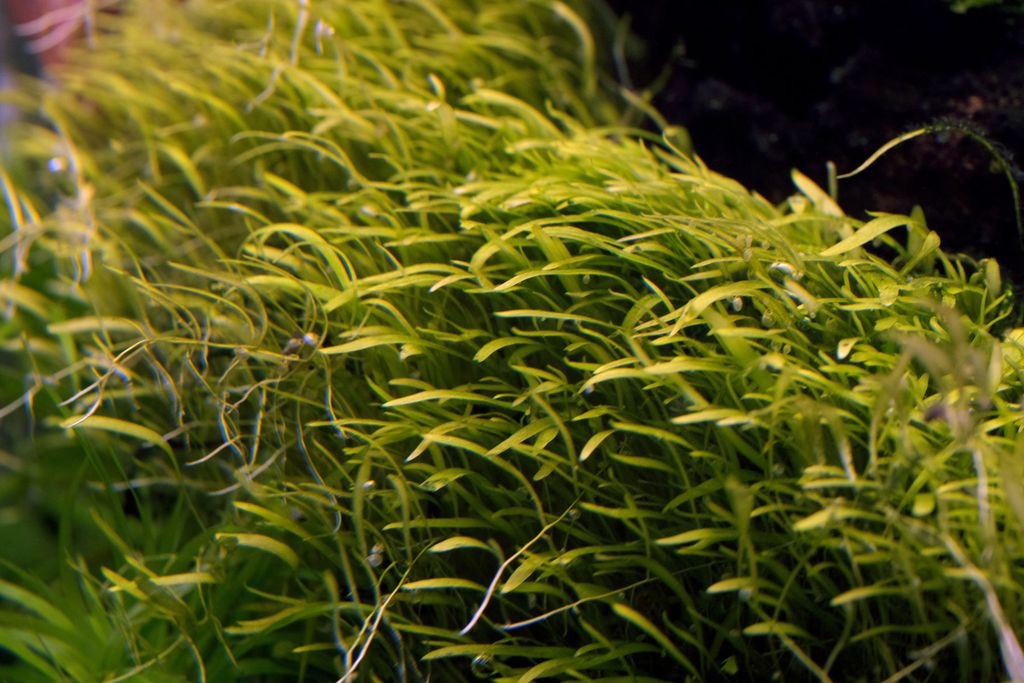
Do damaged leaves heal?
Leaves do not have the ability to heal physical damage such as puncture holes or tears. Cells in the plant tissue will form a callus at the site of the wound to seal it, but the leaf itself will not regenerate fully. If the leaf is not too damaged, it can still continue functioning after the wound is sealed. If the damage is significant, the plant will channel energy into generating new leaves instead, and the damaged leaf will deteriorate at an accelerated rate.
For mild cases of nutrient deficiency – for example, a lack of magnesium causing pale leaves – adding the missing nutrient can cause the overall plant to become greener. However, old deteriorating leaves in a plant, especially when the leaf starts to display physical deterioration (such as fragmentation or holes or broken leaf edges), will not renew themselves even if conditions turn favourable – the plant will instead channel energy into producing new leaves. Plants renew themselves continuously in this way, by producing new growth that is optimized to make sure of the current environmental conditions, while shedding older leaves.
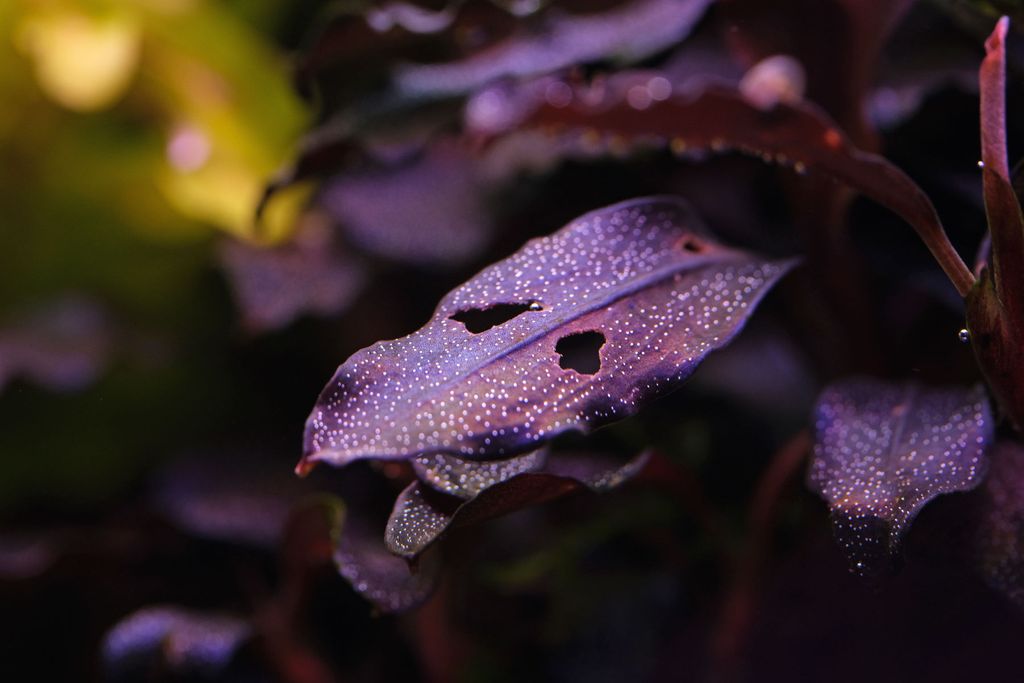
This Anubias leaf has deteriorated too far to be of remaining value. The plant draws nutrients from the deteriorating leaf and channel it to new growth. This accelerates the disintegration of the leaf and makes it a prime candidate for algae. Notice how algae targets only the damaged leaf. Trimming it off would allow space for new growth and prevent it from shading potential growth beneath.
What to do with damaged leaves ?
For stem plants, it is common for the plant to channel most of its energy into new top growth which are closer to the light & flow, while leaving older leaves down the stem to deteriorate. Spacing stem plants out and having more light hit the lower levels can lessen this effect somewhat. However, for many species, the top shoots will crowd out and shade the lower portions of the plant naturally. Hardy species such as Rotala rotundifolia variants may not lose their lower leaves quickly but for many other species top growth density gives rise to deterioration of lower leaves.
During trimming cycles, the top portion of healthy leaves should be cut and replanted, and the bottom deteriorating portion uprooted and discarded. This allows the stem plant bush to be rejuvenated each cycle.
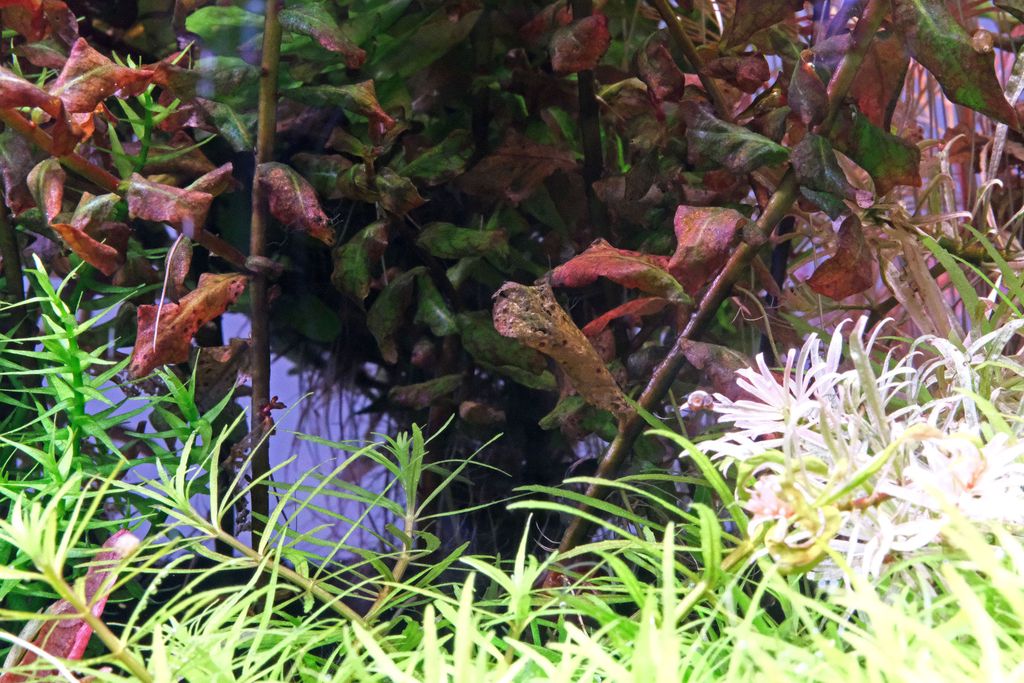
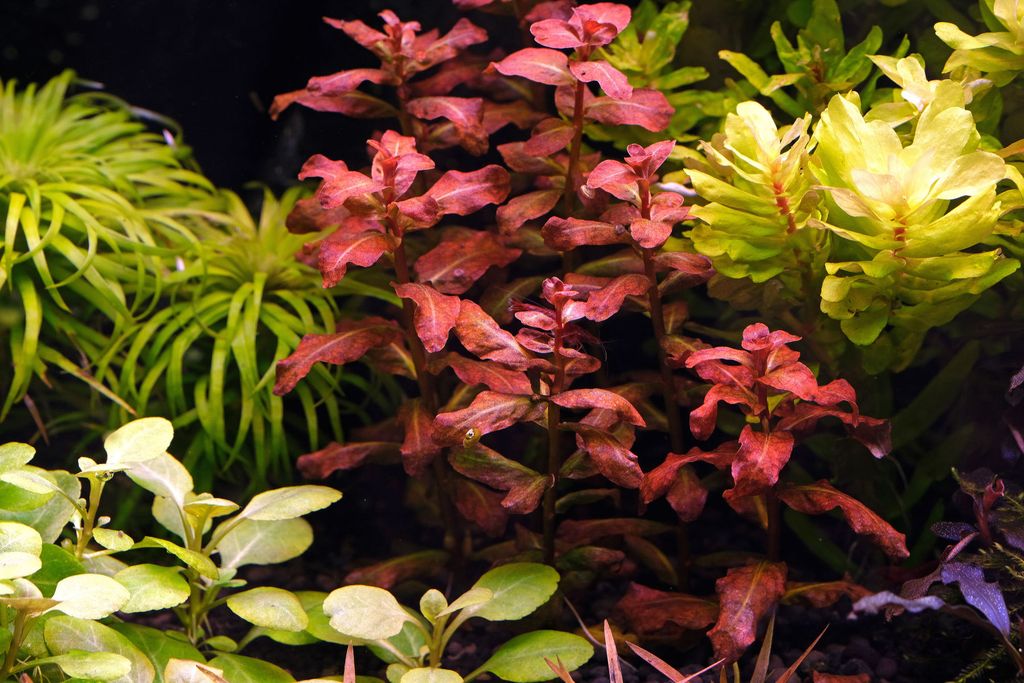
For rhizome plants such as Anubias and Bucephalandra species, old leaves that deteriorate should be cut off. The bare rhizome itself can sprout new leaves or shoot tips and cutting off older, damaged leaves give room for new growth. Overcrowded clumps should be separated into individual rhizomes if you want to maximize growth as a whole. Too many folks are afraid of trimming old growth off Bucephalandra – reducing over-crowding and giving space for new growth allows the clump to grow healthier and faster.
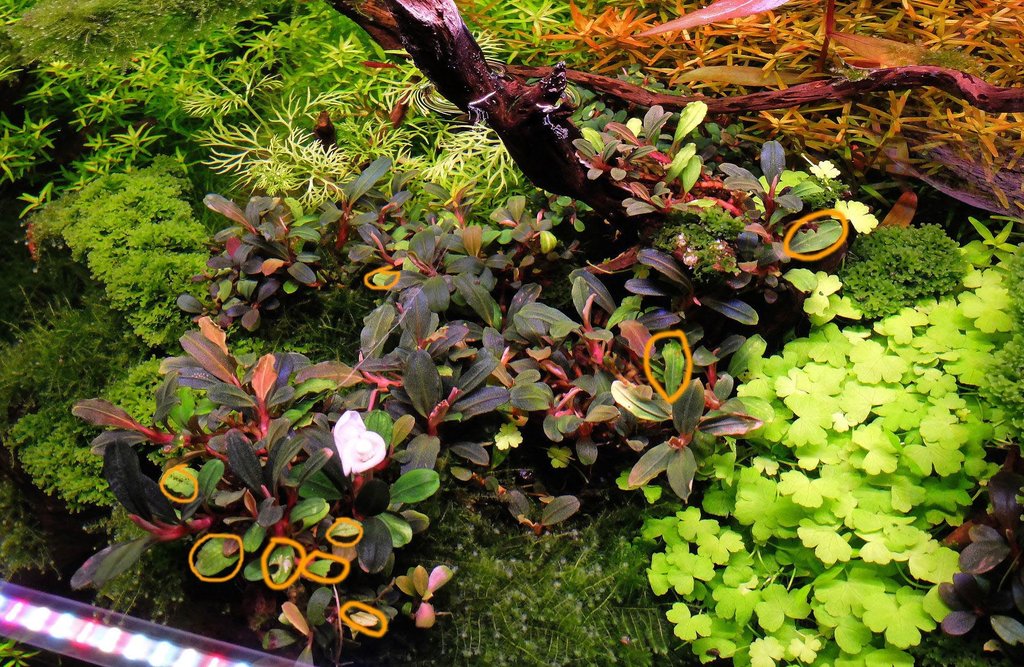
For Rosette plants such as Crypts or Sword plants, cut off damaged leaves at the base. Removing deteriorating old leaves deprives algae of a spawning spot.
Maintaining quality of older leaves
To preserve health of old leaves, it is important to minimize shocks to the system; dips in CO2 supply are especially stressful. Nutrient availability play an important role; having inadequate nutrients can lead to premature deterioration of older leaves. Having a well rounded water column fertilization regime is important as is maintaining the substrate richness if root feeding is utilized. Inconsistent nutrient dosing or large disturbances to the tank’s ecosystem (such as an ammonia spike) can also cause plant stress and hasten deterioration of older leaves. These same factors also cause algae spores to bloom – often resulting in older leaves getting algae. Repeatedly shifting plants that do not fancy being moved, or allowing weaker species to be crowded out by more aggressive growing species can also stress plants.
For slower growing species such as Bucephalandra, adaptation occurs slowly. If you think about it from the angle that only new growth grown under current tank conditions is fully optimized for the current tank, and couple this with how slowly Bucephalandra produce new leaves – the full adaptation of Bucephalandra clumps will take months. For such species, you need very long term stability to grow large patches of them well. This means applying good plant and tank management techniques not just for weeks but multiple months without a significant break in routine in between.
If you change tank parameters or growth conditions every few weeks – stem plants that grow fast can adapt, but your Bucephalandra that produce just one new leaf per week will never catch up. In unstable tanks, there will be always holes or algae in the older leaves of Bucephalandra. The keyword here is consistency.
If you have persistent holes and algae on the older leaves in Bucephalandra, but feel like you have not been tweaking CO2/light/nutrients much at all, chances are either poor maintenance techniques (failure to maintain low organic waste levels, poor horticulture techniques in trimming, replanting etc) have been applied or the system has been setup poorly (poor flow, too much flow, plant placement errors, poor equipment choices etc).

The key to both species isn’t the ability to get both plants to grow new leaves – Bucephalandra has super low demands, while Hygrophila sp chai will grow if you throw enough light & CO2 at it – it is the ability to preserve the older leaves and not lose them to melt or algae. Maintaining the tank stability required to not lose the old growth takes a far more delicate and experienced hand than throwing a ton of light and CO2 to get new growth – something less experienced hobbyists are quick to realize when they start growing these species.
A few key points on maintaining a stable tank
- Horticulture decisions play a great part. Make sure each clump of plant receives enough light, flow and space according to its needs. Some plants can tolerate over-crowding (such as Rotala roundifolia, Staurogyne repens, Limnophila vietnam etc), while some plants do better with more spacing (Ludwigia pantanal, Proserpinaca palustris, Rotala butterfly etc). TLDR; plant spacing is very important for some species.
- Choose trimming methods that maximize healthy leaves – some species are better topped and replanted, discarding the older bottoms (such as Syngonanthus species, Ludwigia senegalensis, more picky Rotala macrandras) While others can be trimmed repeated (straight cutting off and discarding the tops) without issues as the bottom rooted portions regenerate new growth easily. (Limnophila aromatica, Staurogyne repens, Alternanthera reineckii, Rotala rotundifolia etc)
- Doing big resets of the tank due to over-crowding is more destabilizing than making small changes here and there. Develop the discipline to do meaningful weekly maintenance, and not wait till the system is on the brink of crashing to do something.
- Cleanliness plays a great role – this means clearing organic waste regularly by doing large water changes (up to 100%) while siphoning away larger organic particles from the substrate and leaves. Make sure however, that your refill water parameters are not drastically different from your current tank water. Develop a system to make this task efficient (no buckets). If it is tedious, chances are you will not be able to keep up with it long term.
- Fertilization should be regular. Most enthusiasts have no issue with water column dosing. However, very few folks know how to enrich and maintain their substrate long term. This is equally important if your tank is dependent on substrate feeding of plants.
- A fully planted tank is more resistant against algae for all plants present. If you are growing species that are particularly vulnerable to algae on older leaves, such as Hygrophila sp chai, having a tank that is algae resistant as a whole is important.
- Having reliable equipment is a big plus. Faulty CO2 equipment causing a 2 or 3 day dip in CO2 levels can crash high light high growth tanks pretty badly.
- Having the right filter/flow setup at the start helps tremendously. This includes setting up adequate flow in the system (6-10X filter turnover) with a flow pattern that is neither too turbulent (which triggers BBA) or too weak (detritus on leaves lead to algae).
- Cooler temperature tanks are innately more stable and easier to manage as plant and algae metabolism is slower. Every degree above 26 celsius makes it increasingly challenging. This does not mean that plants do not grow at higher temperatures – most plants actually grow faster due to their increased metabolism. However, managing algae can be difficult. In warm tanks aquarists must be even sharper in the other areas of upkeep.
- Observation and early detection of plant problems is important. Neat tanks allow better observation and organization.
